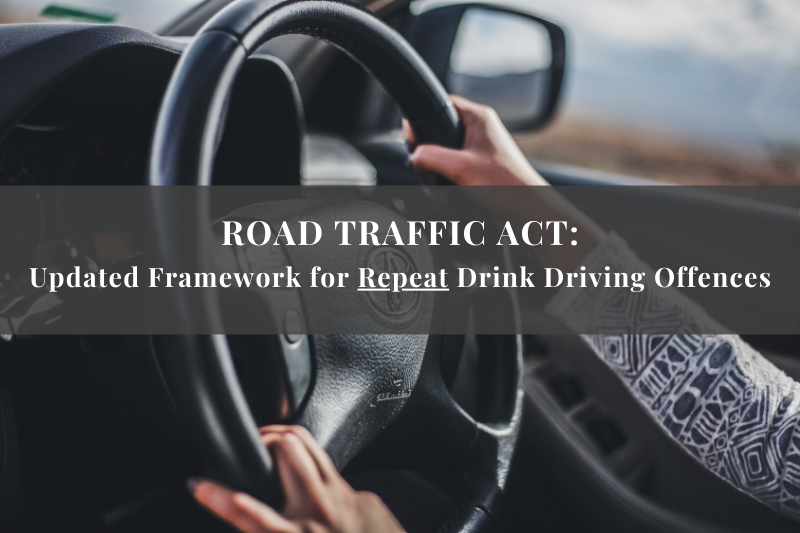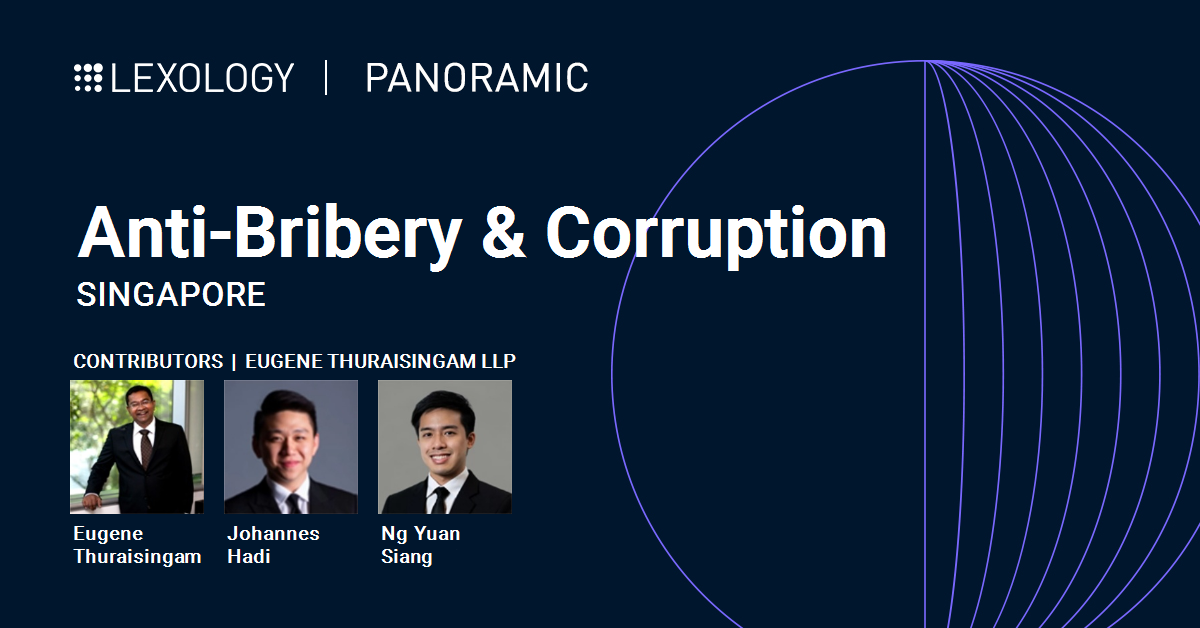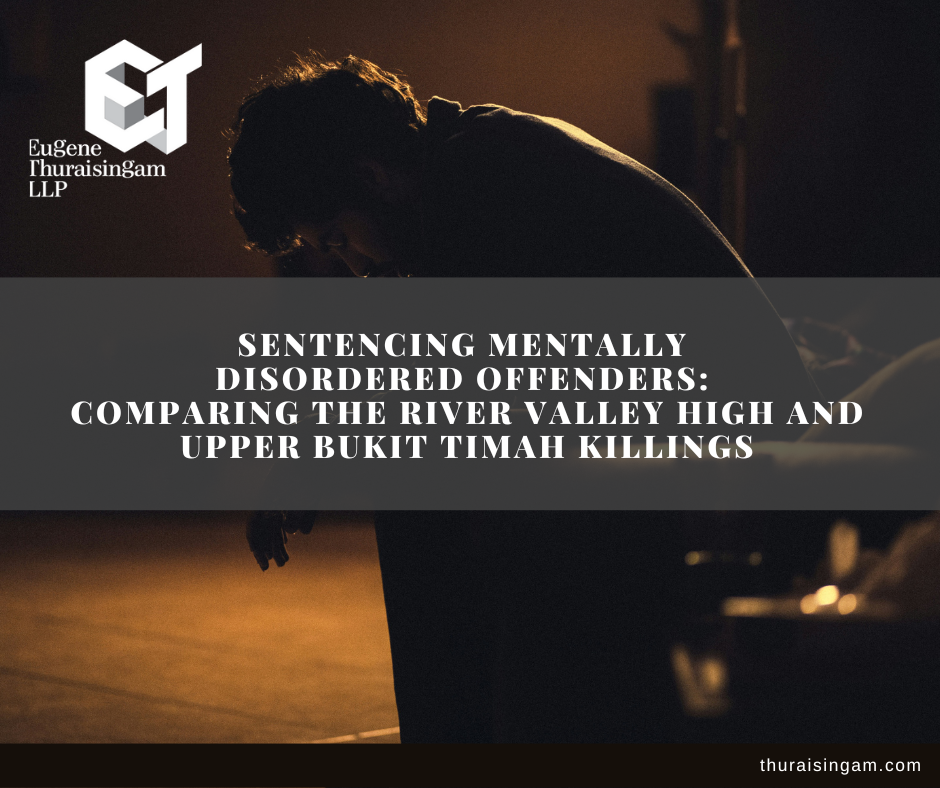Road Traffic Act: Updated Framework for Repeat Drink Driving Offences
Introduction
In December 2023, a significant judgment was handed down in the case of Lee Shin Nan v Public Prosecutor [2023] SGHC 354 (“Lee Shin Nan”) which introduced a new framework for sentencing repeat drink driving offenders in Singapore. Here’s an overview of the sentencing process under this new framework.
Stage 1: Starting Sentence Range
The first stage of the sentencing process focuses on the offender’s blood/breath alcohol level, which is the primary determinant of culpability under section 67(1)(b) of the Road Traffic Act (RTA). Culpability is primarily assessed based on the offender’s alcohol concentration, with a higher concentration indicating a more severe violation of the law. This approach is consistent with previous frameworks, such as the Rafael Voltaire Framework, which also emphasises the importance of the offender’s alcohol level in determining the starting sentence range.
For repeat offenders, the starting sentence ranges need to be adjusted upwards due to mandated uplifts. This means that the minimum sentence for a repeat offender is generally higher than that for a first-time offender. For example:
- A first-time offender may face a fine of $2,000 to $10,000 and a disqualification period of not less than two years.
- A repeat offender, on the other hand, could face a fine of $5,000 to $20,000 and a disqualification period of not less than five years.
- Furthermore, for offenders with two prior convictions, the default disqualification period may be extended to life.
Below is a comparison of the indicative bands for first-time offenders and the adjusted ranges for repeat offenders based on different levels of alcohol concentration: [1]
| Level of Alcohol (μg per 100ml of breath) | Rafael Voltaire Framework for First-Time Offenders | Indicative Band for Repeat Offenders |
| 36–54 | Fine: $2,000–$4,000 Disqualification: 24–30 months | Fine: $5,000–$8,000 Disqualification: 60–66 months |
| 55–69 | Fine: $4,000–$6,000 Disqualification: 30–36 months | Fine: $8,000–$11,000 Disqualification: 66–78 months |
| 70–89 | Fine: $6,000–$8,000 Disqualification: 36–48 months | Fine: $11,000–$14,000 Disqualification: 78–96 months |
| ≥ 90 | Fine: $8,000–$10,000 Disqualification: 48–60 months (or longer) | Fine: $14,000–$17,500 Disqualification: 96–120 months (or longer) |
These adjustments reflect the seriousness with which repeat drink driving offences are viewed under the new framework, aiming to deter repeat offenders and enhance public safety on the roads.
Stage 2: Adjustment on Account of Repeated Offending Behaviour
In the second stage of the sentencing process, the court will adjust the provisional fine and disqualification period based on two key factors: [2]
1. The Actual Quantity of Alcohol within the Applicable Alcohol Level Band: This factor is straightforward and involves considering the specific alcohol level of the offender within the relevant band.
2. Circumstances Pertaining to the Repetition of the Offending Behaviour: This factor is equally important as it contributes significantly to the severity of the sentence. The following considerations are relevant:
Interval Between Previous Convictions: A longer interval between previous convictions and the present one lessens the weight of this factor as an aggravating factor.
- Number of Offences: The greater the number of previous offences, the more aggravating this factor becomes.
- Trend of Increasing Gravity of Alcohol Consumption and Driving: If there is evidence of a trend of increasing severity in alcohol consumption and driving behaviour, it significantly enhances the sentence.
- Trend of Increasing Danger Posed to the Public: Similarly, if there is a trend of increasing danger posed to the public with each repeat offence, it further increases the severity of the sentence.
When calibrating the fine and disqualification period, the court begins with the range specified by the relevant Alcohol Level Band. However, these ranges serve as mere guidelines, and the court retains discretion to shift to a lower or higher band if warranted by both the actual alcohol amount and repetition considerations. This flexibility enables the court to customise sentences to the case’s nuances, promoting deterrence and safeguarding public road safety.
Stage 3: Adjustment to Account for Aggravating and Mitigating Factors
During this stage, the court weighs both aggravating and mitigating factors associated with the offence and the offender to determine if further adjustments to the fine and disqualification are warranted. These adjustments must adhere to the statutory limits set by law. Given the mandatory nature of imprisonment for repeat drink driving offenders, this factor is exclusively considered in the next stage of the framework.
Factors Taken into Account[3]
1. Degree of Public Risk: Evaluation of driving circumstances, road conditions, traffic state, and location to assess the potential danger posed to the public.
2. Travel Distance: Examination of the distance travelled by the offender during the offence.
3. Driving Speed: Assessment of the speed at which the offender was driving.
4. Driving Behaviour: Analysis of the mannerisms exhibited by the offender while driving.
5. Motivation for Driving: Understanding the underlying reasons behind the offender’s decision to drive.
6. Admission and Remorse: Consideration of whether the offender pleaded guilty and expressed genuine remorse.
7. Relevant Background: Review of any other pertinent factors not yet taken into consideration.
Here the court ensures that the fine and disqualification period correspond with the seriousness of the offence and the culpability of the offender, taking into account factors that may either mitigate or exacerbate the severity of the sentence.
Stage 4: Mandatory Imprisonment Term
In the final stage of the sentencing analysis, the court will determine the appropriate term of imprisonment, considering all circumstances. For repeat drink driving offenders, a term of imprisonment is mandatory, reflecting the legislative intent to deter recidivist drink driving and prevent accidents, injuries, and fatalities resulting from such behaviour.
The length of the imprisonment term is primarily influenced by the need for deterrence, both general and specific, and the severity of the offender’s behaviour.
Key factors considered include: [4]
1. Manner and Circumstances of Driving and Road Conditions: This involves assessing the level of danger posed by the offender’s actions and the prevailing road conditions.
2. Nature and Number of Relevant Antecedents: The court considers the offender’s previous convictions and their nature, as well as the frequency of these convictions.
3. Recency of Antecedents: Recent convictions are viewed more severely as they indicate a pattern of ongoing offending behaviour.
4. Actual and Potential Danger Posed to Others: The court evaluates the harm caused or potentially caused by the offender’s actions to determine the seriousness of the offence.
These factors contribute to the overall gravity of the offence, guiding the court in categorising the offence into one of three broad classes with indicative sentencing bands: [5]
- Serious: 1–6 months’ imprisonment
- More Serious: 6–12 months’ imprisonment
- Most Serious: 12–24 months’ imprisonment
Based on the severity of identified factors, the court assigns the offence to an appropriate sentencing band. Generally, fewer aggravating factors lead to categorisation in the “serious” band, while more pronounced aggravating factors may result in placement in the “more serious” or “most serious” bands.
Lastly, the sentencing court reviews the overall sentence to ensure proportionality and adequacy. This includes assessing whether adjustments are needed for the fine and disqualification order, exploring potential enhancements under s 67A (see below), and ensuring that the punishment aligns with the gravity of the offence and serves the interests of justice.
Enhanced Penalty Provision of 67A
Section 67A of the RTA provides for the imposition of even more severe penalties for third-time (or subsequent) offenders under section 67(1) of the RTA. However, the court has discretion in deciding whether to invoke this provision.
Here are the key points regarding the application of section 67A: [6]
1. Scope: Section 67A empowers the court to enhance punishment beyond what is prescribed under section 67. It is not invoked automatically but rather applied when deemed necessary for safeguarding the public or preventing future offences.
2. Factors: The court examines the offender’s prior convictions and background to decide if enhanced punishment is necessary, evaluating factors such as the nature and frequency of previous offences and their potential risk to the public.
3. Enhancement Limits: Section 67A allows for the punishment to be increased by up to three times the prescribed punishment for the present conviction, capped at a maximum of ten years’ imprisonment. This means the maximum thresholds for fines and imprisonment under section 67 can be tripled.
4. Separate Review: The decision to invoke section 67A is a separate inquiry after considering the initial punishment. The court ensures the initial penalty is adequate for deterrence and prevention before considering enhancement.
5. Considerations: Factors guiding this decision include the offender’s disregard for the law, past sentences nearing maximum penalties, and the frequency and duration of reoffending.
In summary, while section 67A grants the court discretion to impose harsher penalties on repeat offenders, it requires careful consideration of the offender’s history and the need for enhanced deterrence and public safety.
Conclusion
In conclusion, the new framework for sentencing repeat drink driving offenders in Singapore, as introduced in the Lee Shin Nan case, provides clearer guidelines for determining penalties. By considering factors such as alcohol concentration, repetition of offending behaviour, aggravating and mitigating circumstances, and mandatory imprisonment for repeat offenders, the framework aims to enhance deterrence and protect public safety on the roads. Additionally, the provision of section 67A allows for even more severe penalties for repeat offenders, further emphasising the seriousness with which such offences are treated. Overall, these measures underscore Singapore’s commitment to combating drink driving and ensuring road safety for all.
To read more about other traffic-related cases we have handled, see: https://thuraisingam.com/case/road-traffic-act-chief-justices-new-framework-for-drink-driving-and-reckless-driving-offences
[Disclaimer: This article is for informational purposes only and should not be construed as legal advice. Legal outcomes may vary depending on individual circumstances. For more information or to schedule a consultation, do contact us directly.]
References
[1] Lee Shin Nan at [63].
[2] Lee Shin Nan at [64] – [66].
[3] Lee Shin Nan at [69].
[4] Lee Shin Nan at [70].
[5] Lee Shin Nan at [71].
[6] Lee Shin Nan at [82] – [89].






